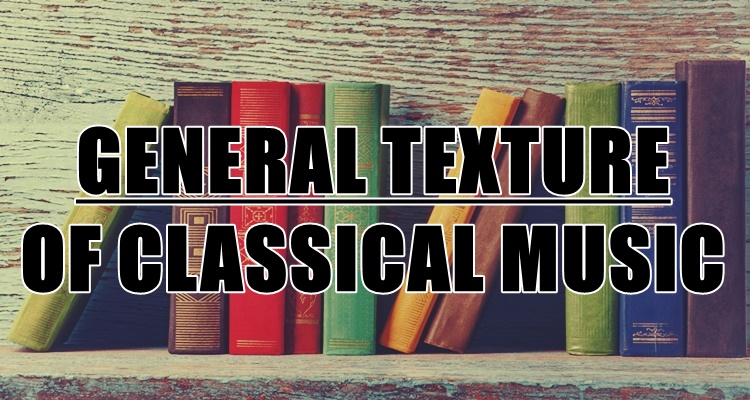What is the general texture of classical music? Some things to understand about the texture of music.
GENERAL TEXTURE OF CLASSICAL MUSIC – These are the four types of the texture of music and the general texture of the classics.
Music can make wonders. It can give your sadness a name and your cries a tune. It also resounds your happiness and either takes away or gives you fears. It can make you cry, dance, happy, and sad in a snap. It can bring back memories. Most are nostalgic. A reflection of one’s culture, a story-telling of a country’s history, the story of two people, and many others. That is how wonderful music is. They are made out of someone’s experience, suffering, sadness, happiness, and even madness.

However, academically, music is defined as “the combination of sounds and silence in an organized fashion” that comprehensively has the following: melody, harmony, and rhythm.
Music has four types of textures – Monophony, Polyphony, Homophony, and Heterophony.
- MONOPHONY
Made of one-single melodic line and one song that has this is the Ancient Greek music called The Epitaph of Seikilos. Bach’s Cello Suite No. 1 in G major is also an example.
- POLYPHONY
Consist of two or more simultaneous melodic lines. This was developed in the late part of the Middle Age and dominated the music Renaissance. Giovanni Pierluigi da Palestrina is a famous composer of this type of music texture. J. S. Bach from the Baroque period composed Invention in D minor that has this texture.
- HOMOPHONY
The main melodic line is being harmonically supported by one or more additional musical lines. Chorale is a basic form of this and Bach’s Jesu, meine Freude is an example.
- HETEROPHONY
The songs of Middle East, Asia, and European folk traditions are heterophones. It is safe to say that this is an elaborate version of Monophony. Western composers Debussy and Benjamin Britten’s music are heavily influenced by this type of texture. Mozart’s classic Piano Concerto in C minor is an example.
And as for classical music, the general texture of classical music is homophony. It is lighter with a clearer texture and much less complex compared to Baroque music.
READ ALSO:
- Nonfiction Stories In Philippines – Some Examples Of This
- Rogelio Sikat Biography – Writer’s Life Story and Career Achievements
What can you say about this? Let us know!
For more news and updates, follow us on Twitter:@philnews_ph Facebook:@PhilNews and; YouTube channel Philnews Ph.
